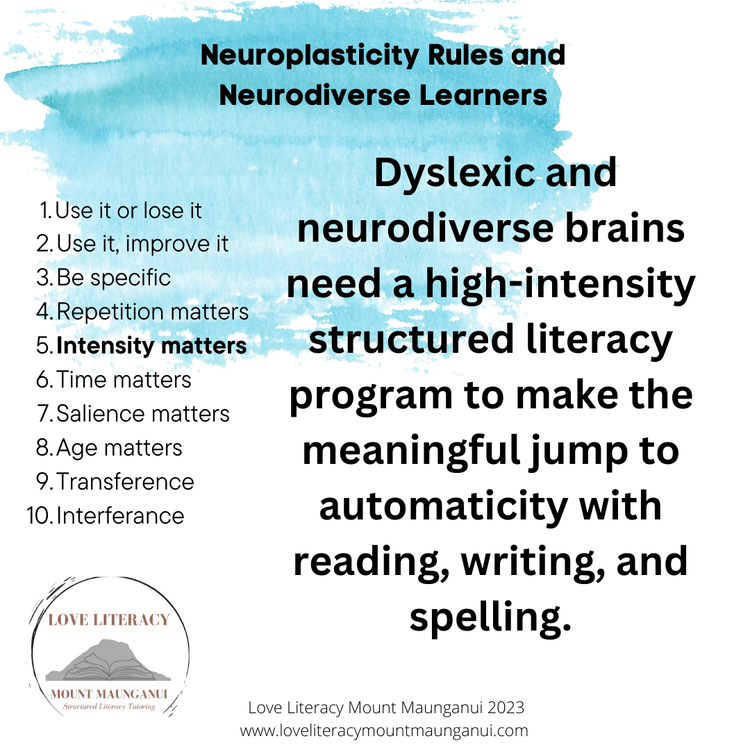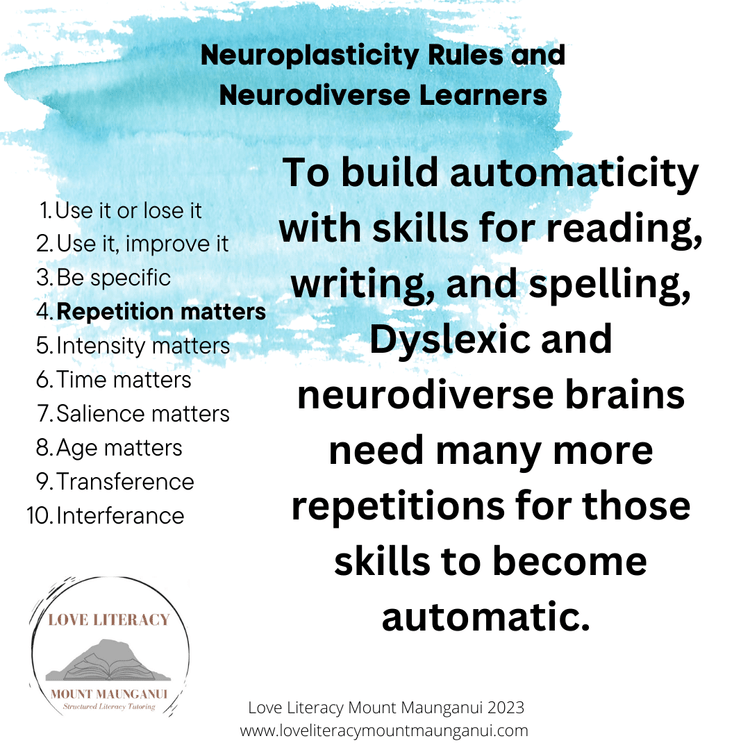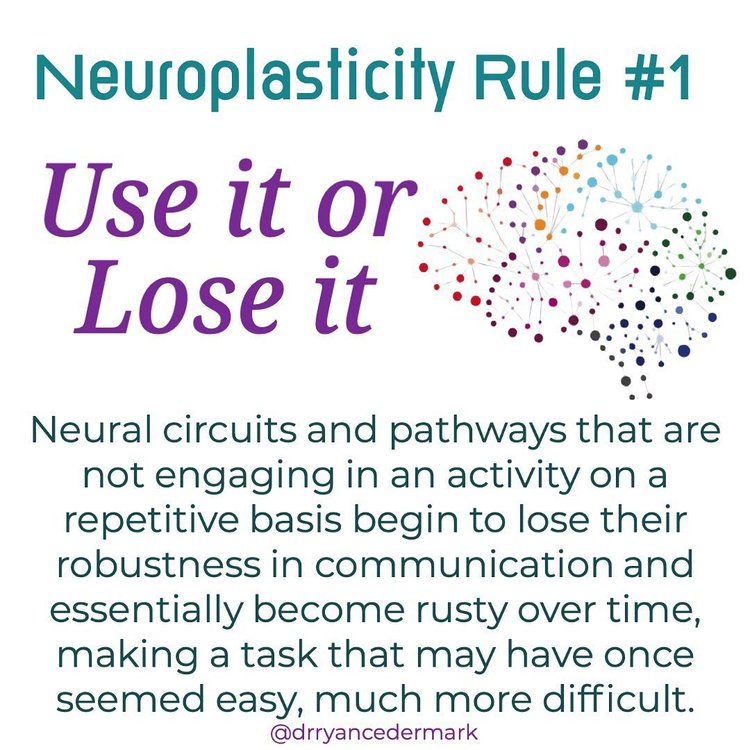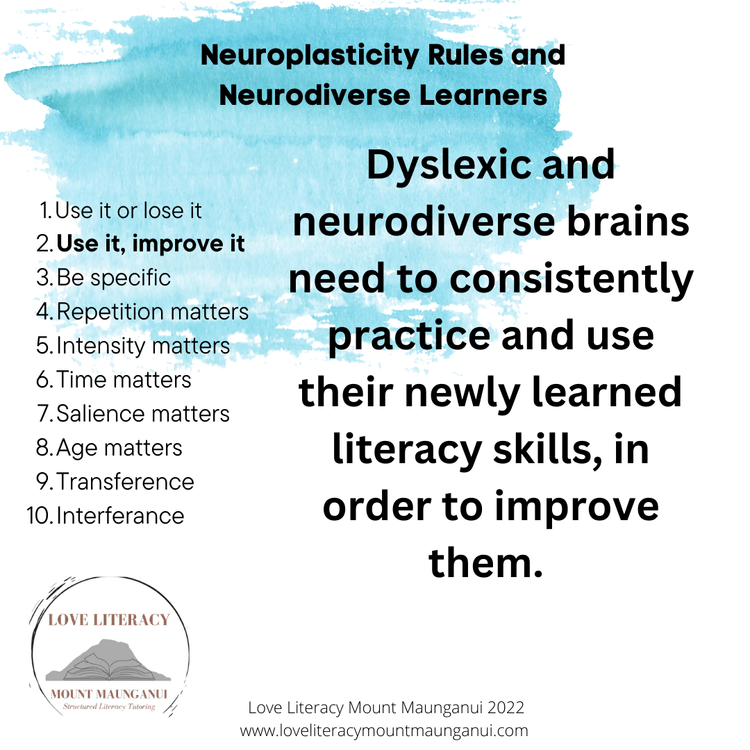Neuroplasticity Rule #7 – Salience Matters This week I’m looking at Neuroplasticity Rule number 7 – Salience Matters. This post is short and sweet! I hope you have enjoyed the various posts I have put up over the weeks, I’ve really enjoyed reading into Neuroplasticity Rules and how these can be looked at through the […]

Neuroplasticity Rule #8 – Age matters This week we look at Neurplasticity Rule number eight, I look at how Age Matters for Dyslexic and Neurodiverse learners when learning to read, write and spell. Age really does matter, and this is because any type of change brought about by teaching something in a specific way, occurs […]

Neuroplasticity Rule #9 Wow, we are almost at the end of the ten rules of neuroplasticity! I hope you have enjoyed this as much as I have! This week we look at the Neuroplasticity Rule of ‘transference’. Transference can be described as follows: “Plasticity (change) in response to one training experience, can enhance acquisition of […]

Neuroplasticity Rule #10 Interference. Here we are in the final week of looking at the ten rules of Neuroplasticity, through the lens of a dyslexic or neurodiverse learner. The final rule is interference. Unfortunately, changes in the brain that result in bad habits, may interfere with learning good habits (https://www.cfimove.org/). As Kleim & Jones (2008) […]

Neuroplasticity Principle #5 In Neuroplasticity Principle number 5, we look at how intensity matters in teaching reading, writing, and spelling in order to make the necessary changes and cement skills for automatic retrieval for dyslexic and neurodiverse learners (and all learners!). “Change (plasticity) requires intensive training” (2023, Centre for Independence). If you want to get […]

In Neuroplasticity Rule Number 6, we discuss how time matters. The sooner a learner is identified as having neurodiverse needs, whether they be dyslexia or dysgraphia or ADHD for example, the sooner the correct supports can be put in place to ensure success for that learner. This can be both at home, and at school. […]

Wow! I’m on a podcast! Recently I took part in the podcast series Human Chapters. It was huge for me to do this, and I want to thank Arti from Human Chapters for finding me and giving me this opportunity to share. My story covers the journey I have been on over the last 8 […]

Neuroplasticity Rule #4 If we want to elicit change (or plasticity), this will require enough repetition (2023, cfimove.org). Now how many repetitions, is really dependent on a lot of different circumstances, for example, what we are learning, and what other extraneous factors are contributing to needing to learn it, and how our brains work with […]

I just love these Neuroplasticity Rules from Brain Chat. How do we relate the “Use it or Lose it” rule to reading, writing, and spelling for neurodiverse learners? Simply put, neurodiverse learners may need many, many more repetitions on a regular basis of reading and writing skills than a neurotypical brain needs, in order to […]

Neuroplasticity Principle #2: Over the following weeks, I’m putting together my thoughts about the principles of neuroplasticity, and how these may relate to dyslexic and neurodiverse learners. So what does principle number two mean – use it and improve it, and how would this relate to teaching literacy to a Dyslexic learner? Simply put, use […]









